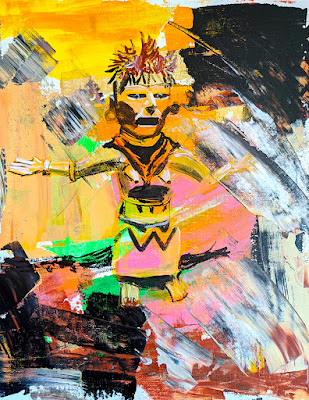Cihuateteo means "Women Goddesses". These Goddesses are native to Mesoamerica, appearing in the pantheon as mortal women who died in childbirth and then were deified. The Chihuateteo travel throughout the day, dwelling first with the stars in the western sky in the heavenly region called Cihuatlampa or "place of women". Then, from noon to sunset they accompany the sun, following it through the night as it lights the underworld.
Every 52 days the Chihuateteo would descend to earth to reign for a day associated with the west. On these days, children were cautioned to stay inside and men to be careful. Only those skilled in dealing with divine possession should be outside on the days the Chihuateteo descended.
In modern writings the Cihuateteo are often characterized as monsters, however this was not originally the case. Rather, they were powerful, benevolent ancestors who were honored and revered. In prayers they were referred as brave fighters who achieved noble deaths. They were such literal embodiments of bravery that bodies of those who had died in childbirth had to be guarded against warriors who would attempt to sever the middle finger of the woman's left hand to as a talisman to assure their own bravery and success in battle. The iconography associated with the Cihuateteo varies regionally. In Vera Cruz, the statues were modeled after individual women who died in childbirth (source)
The Cihuateteo statues from Veracruz make me think of the "pretty ladies" of Tlatilco, which date from even earlier in the archaeological record. Tlatilco, where the "pretty ladies" have been found in large numbers, is located beneath part of present day Mexico City. The inhabitants of Tlatico were indigenous to the area prior to the rise of the Aztec Empire, and the female figurines date as far back as 1800 BCE, about two thousand years before the Veracruz Chihuateteo statues. Very few male figures have been found among the great numbers of female figurines which are often found in burials. The female figures were made individually by hand, rather than from molds and often sported elaborate hairstyles (source).
I find it interesting that early European female figurines are Venuses - Goddesses, while these are simply termed "pretty ladies", especially since they don't seem to have been designed to be simply "pretty". Rather, the examples shown below seem to emphasize regenerative powers of creation through exaggerated hips and vulvas, and bravery through intense facial expressions similar to the expression found the the Chihuateteo example from Veracruz, approximately 1000 years later.






Comments
Post a Comment